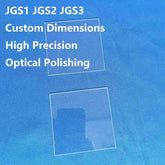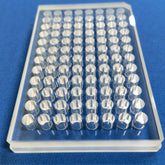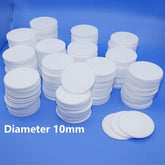Devitrification of quartz glass
Devitrification, also known as crystallization, is an inherent defect of quartz glass. From a thermodynamic point of view, the internal energy of the quartz glass tube is higher than that of crystallized cristobalite, rendering it in a thermodynamically metastable state. When the temperature is higher than 1000℃, SiO2 molecules accelerate their vibration, rearranging and orienting themselves for a long period of time, so that the crystallization is formed.

The speed of crystallization is expressed by the growth rate of crystal nucleus. For opaque quartz glass tubes, the speed reaches a maximum at 1520℃, while for transparent quartz glass tubes, it reaches a maximum at 1620℃.

Crystallization mainly appears on the surface of quartz glass, followed by internal places with defects. This is because that these places are susceptible to contamination, which causes the partial concentration of impurity ions. Especially when alkali ions (such as K, Na, Li, Ca, Mg, etc.) enter into the network, the viscosity of molecules is reduced, accelerating the crystallization of quartz glass.

Because the thermal expansion coefficient and proportion of the quartz glass tube are similar to that of β-cristobalite, one of the crystallization products, it can be used continuously at high temperatures. Despite the expansion of the crystallization zone with continuous use at high temperatures, the volume change of the quartz glass tube is not significant, so that it can still be used effectively. At this time, the plastic deformation of the glass can be reduced, as well as the refractoriness can be improved. However, when the crystallization product is cooled to 800℃, some small cracks may appear.

As the temperature continues to cool to 200-275 °C, a structure change of cristobalite from high-temperature type to low-temperature type (β-cristobalite → a-cristobalite) occurs. This is accompanied by a significant change in volume, and if the crystallization layer is very deep, it can cause the quartz glass tube to break. Given that crystallization frequently occurs in areas with impurities, it is crucial to assess the surface state, surrounding refractory materials and atmosphere of quartz glass prior to high-temperature use.






